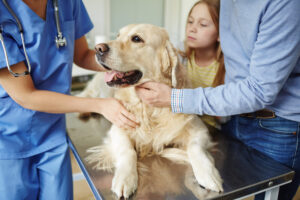
Your pet doesn’t need a backyard to lead a happy and healthy life – here’s 5 tips from pet expert Dr Dani Hoolahan.
As apartment living continues to increase in popularity, pets of all shapes and sizes are apartment dwellers too. So, what does this mean for them and their care?
It’s important to consider the basic needs of our pets to ensure their everyday comfort and happiness in the home space. All pets need these 5 things on top of basic requirements for a healthy life.
1. Physical exercise
We know about the health benefits of exercise for ourselves, and the same goes for our pets. The quantity and intensity of physical exercise are very much dependent on your pet.
Young, active dogs will have higher exercise requirements than older and less active dogs, but this doesn’t mean your older dog won’t appreciate a daily walk or sniffing time at the local park.
However, walking dogs for hours on end isn’t always the best way to give them physical exercise. Play is also an important way for many pets to burn off energy as well as for you to have fun with your pet.
If you live a busy lifestyle, contact a trusted local dog walker or pet sitter to help provide your pets with exercise and company. Doggie day-care may also be an option for pups who love to socialise.
2. Mental enrichment and stimulation
While exercise and play may address physical needs, addressing our pets’ needs for mental stimulation can be just as important. These may be incorporated into physical activities, but there are other ways to make the apartment more interesting for our pets.
For the wild ancestors of our cats and dogs, as hunters and scavengers alike, mealtime would have been a hugely stimulating activity. Simply placing a bowl in front of them each day deprives them (and you) of an opportunity for an enriching and satisfying experience.
Ways you can improve mealtime for your dogs and cats include the following:
- Scatter pet food on and around different toys, grassy patches, on cat scratchers and inside pet safe objects so that pets can investigate and search for their meals.
- Slow feeders, treat balls and puzzle feeders can be sourced for both cats and dogs to help make meals much more enriching and stimulating for our pets.
- Training – by using their regular meals as time to do short intervals of training, mealtime also becomes not only enriching but also educational for your pet.
Other ways to make the environment more enriching outside of mealtimes:
- Provide plenty of toys, rotated regularly so that they don’t become boring.
- Give your pets access to fresh grass to eat, sit on or use as a toilet depending on the pet. For cats, the addition of fresh or dried catnip can also be useful, although not all cats respond to catnip.
- Provide different sizes and locations of beds, pet tents and so on. For cats, make sure you think vertically as well as horizontally. Shelves, scratching posts or other items marketed to make use of walls and doors can be great for smaller spaces and allow cats to enjoy their natural instincts to climb. Don’t underestimate cardboard boxes for cats to hide in as well.
3. Rest and sleep
Just like us, having poor quality or not enough sleep and rest can make pets anxious, stressed and unhappy.
Providing plenty of different options and locations for pets to sleep is often overlooked when it comes to our pets.
Having choice not only helps mentally but also means that pets can have options to get away from particularly noisy, sunny or cold parts of the apartment.
4. Social interaction and affection
Understanding our pets as individuals can help us to understand how much social interaction and affection they require.
We may think we’re doing a great job taking our dog to the dog park every day for instance; however, some dogs may find themselves much happier at home. They may prefer playing one-on-one with you instead, finding the hustle and bustle of the dog park stressful.
Similarly with cats, we may impose affection onto them that isn’t wanted or not give them enough! For particularly sociable pets, having the company of another pet may be a great option but before committing to 2 pets, you need to be sure it will be a positive experience and not just “double trouble”.
5. Breed-specific requirements
Consider that some breeds may have specific needs when it comes to enriching activities. For some dogs, this can include retrieving, herding or swimming. Finding creative ways to give them an outlet to perform their instinctive behaviour is important to ensure their happiness.
As our lifestyles change and we find ourselves and our pets increasingly living in apartments, taking the time to understand our pets’ basic needs and adjust accordingly can be the difference between a happy and unhappy household.
If you’re concerned about your apartment-dwelling pet, contact your vet or a reward-based qualified dog trainer to assist you with your pets.
Dr Dani Hoolahan is PetSure’s Chief Veterinary Officer, working closely with the veterinary profession and industry to increase pet insurance awareness in Australia. She completed her degree from Murdoch University with honours and is a Diplomate of the American College of Veterinary Dermatology, is the founder of the Veterinary Dermatology Clinic, and is a proud pet parent to Spike, Daisy and Oliver (a trio of labradors), Ghost (a Lykoi kitten), and Hobbes (a domestic shorthair cat).
Disclaimer: The views and opinions expressed in this article (which may be subject to change without notice) are solely those of the author and do not necessarily reflect those of Finder and its employees. The information contained in this article is not intended to be and does not constitute financial advice, investment advice, trading advice or any other advice or recommendation of any sort. Neither the author nor Finder has taken into account your personal circumstances. You should seek professional advice before making any further decisions based on this information.





